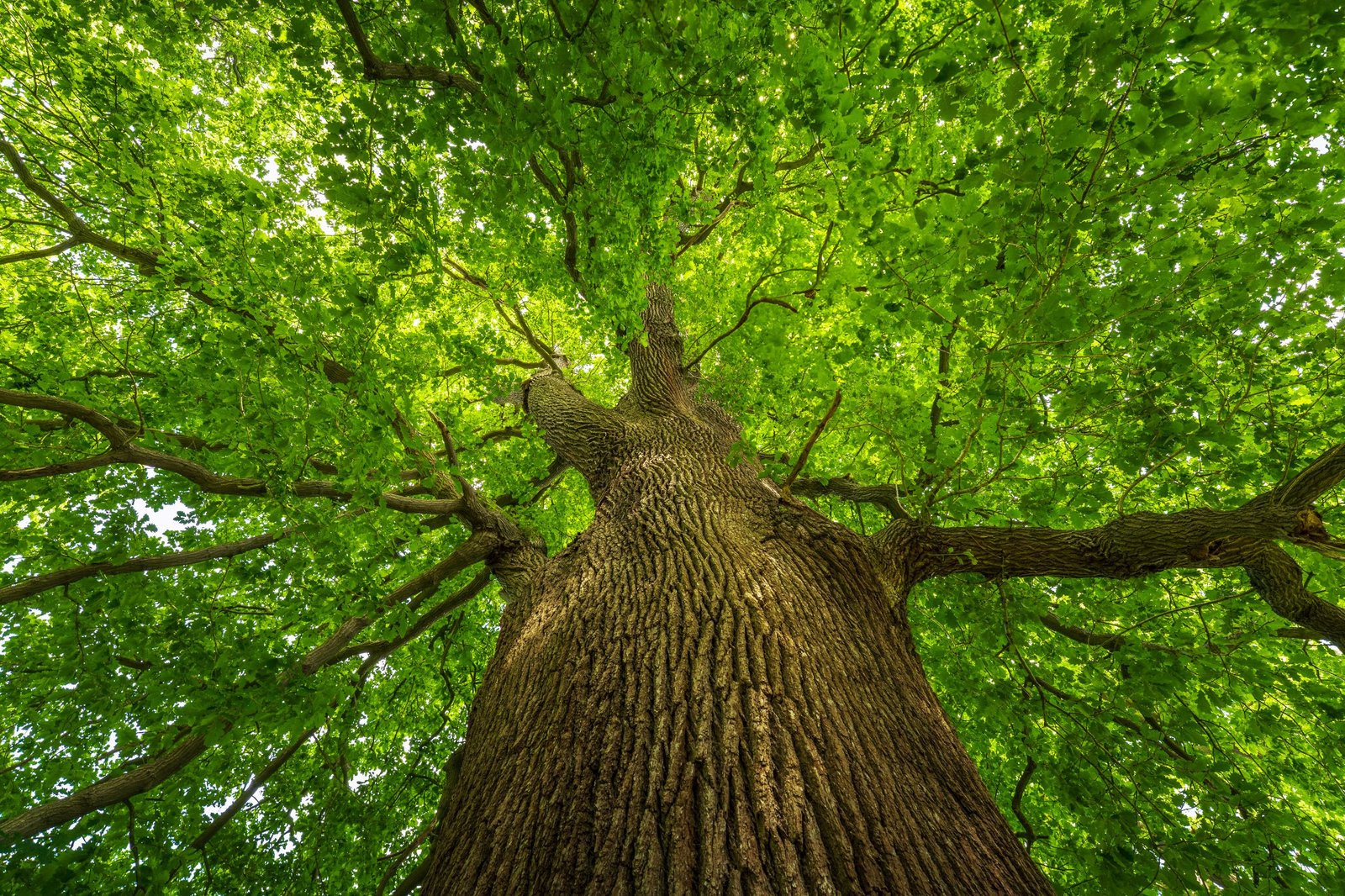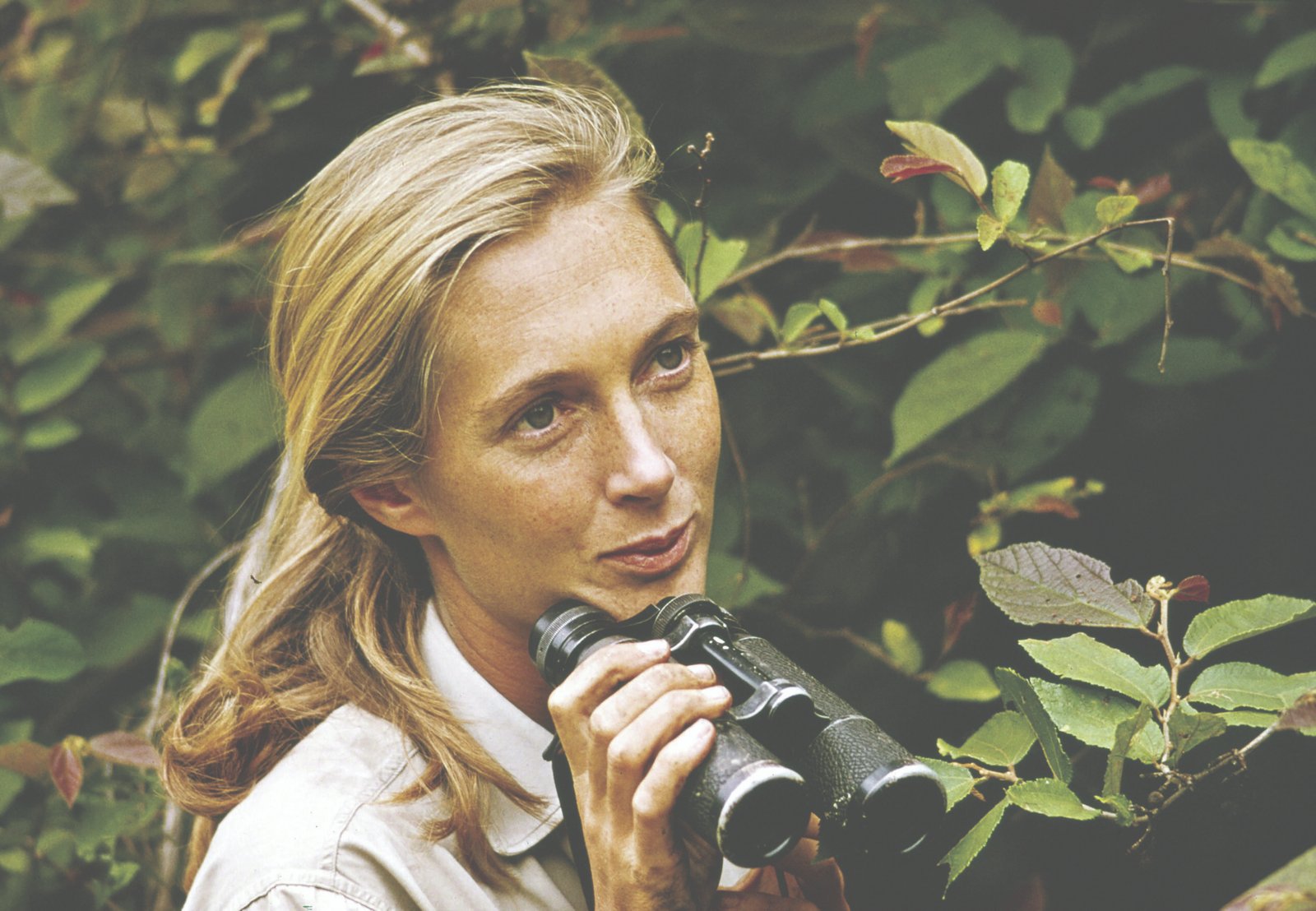Ten inspiring trees in the UK are vying for top branch in the Woodland Trust’s Tree of the Year 2025 award.
The theme of this year’s contest, ‘Rooted in Culture,’ honours the deep intertwining of trees with our cultural heritage.
Trees purify the air we breathe and provide habitats for countless species. Their presence nurtures not just the environment but our well-being—physically, emotionally, and spiritually—and many have quietly inspired artists, thinkers, and dreamers. We played under them as kids, climbed their trunks, and imagined treehouses in their branches. That bond stays with us. Most of us still have a favourite—a place we return to for peace, reflection, and to reconnect with ourselves.
The Tree of the Year 2025 award is all about celebrating this connection. The ten shortlisted below are local landmarks and sources of creativity and inspiration, each with its own story to tell.
Nine were selected by a panel of experts, while the tenth is a wildcard chosen by a member of the public.
Only one can rise above the rest. Vote for your favourite before midnight on 19 September.
The winner will be announced on 26 September, and will represent the UK in the 2026 European Tree of the Year contest.
1. The Borrowdale Yews, Seathwaite, Cumbria
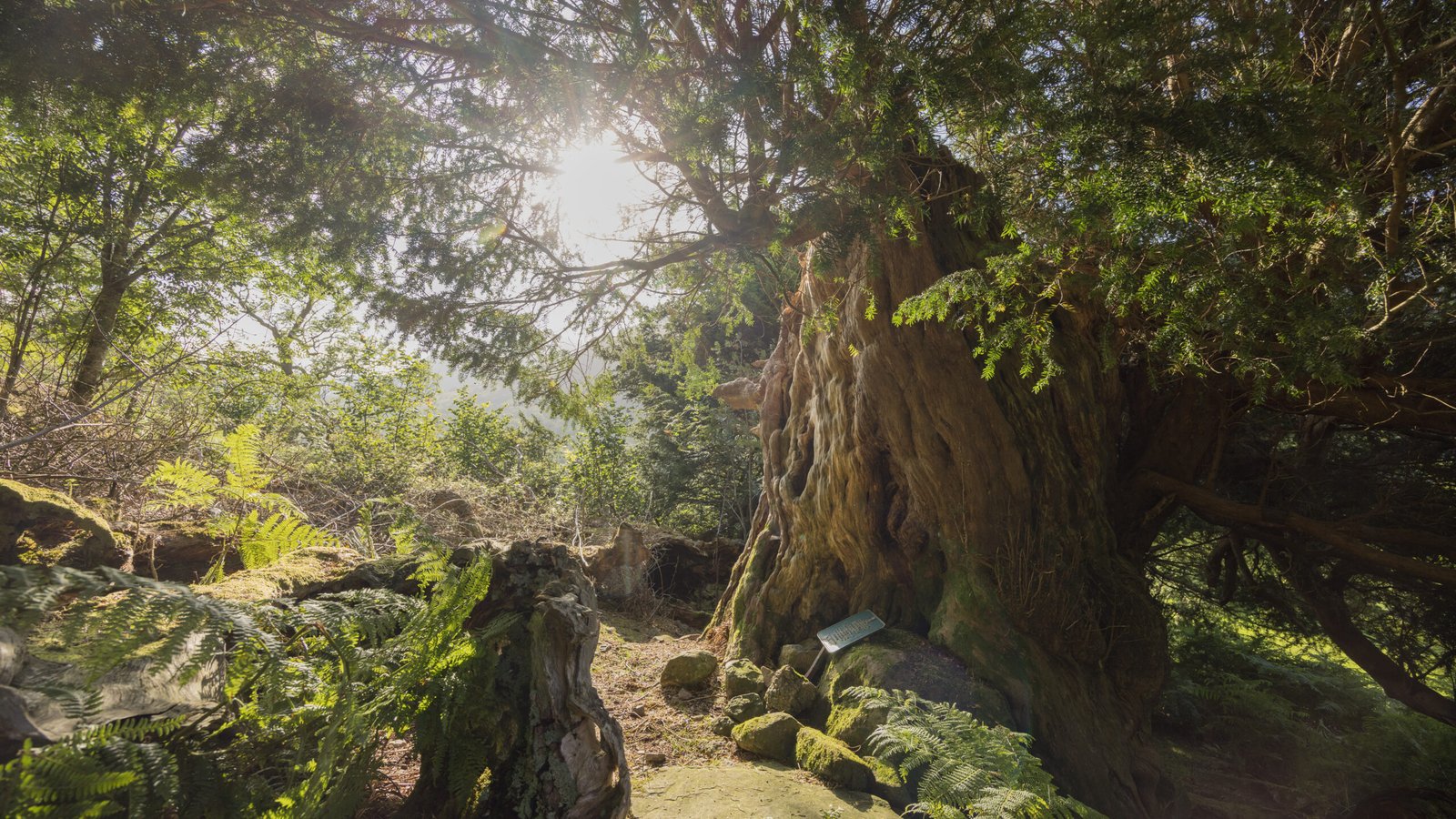
William Wordsworth immortalised the Borrowdale Yews—thought to be around 2,000 years old—in his 1803 poem Yew Trees:
‘…those fraternal Four of Borrowdale,
Joined in one solemn and capacious grove;
Huge trunks! – and each particular trunk a growth
Of intertwisted fibres serpentine
Up-coiling and inveterately convolved…’
The ‘Fraternal Four’ didn’t stop there: they later made an appearance in John Lowe’s 1896 book The Yew-Trees of Great Britain and Ireland, were painted by Alfred Heaton Cooper in 1922, and posed for the lens of Francis Frith.
Although they look like separate trees, DNA analysis has revealed a botanical twist—the now three remaining yews all grew from the same tree.
2. The King of Limbs, Savernake Forest, Wiltshire
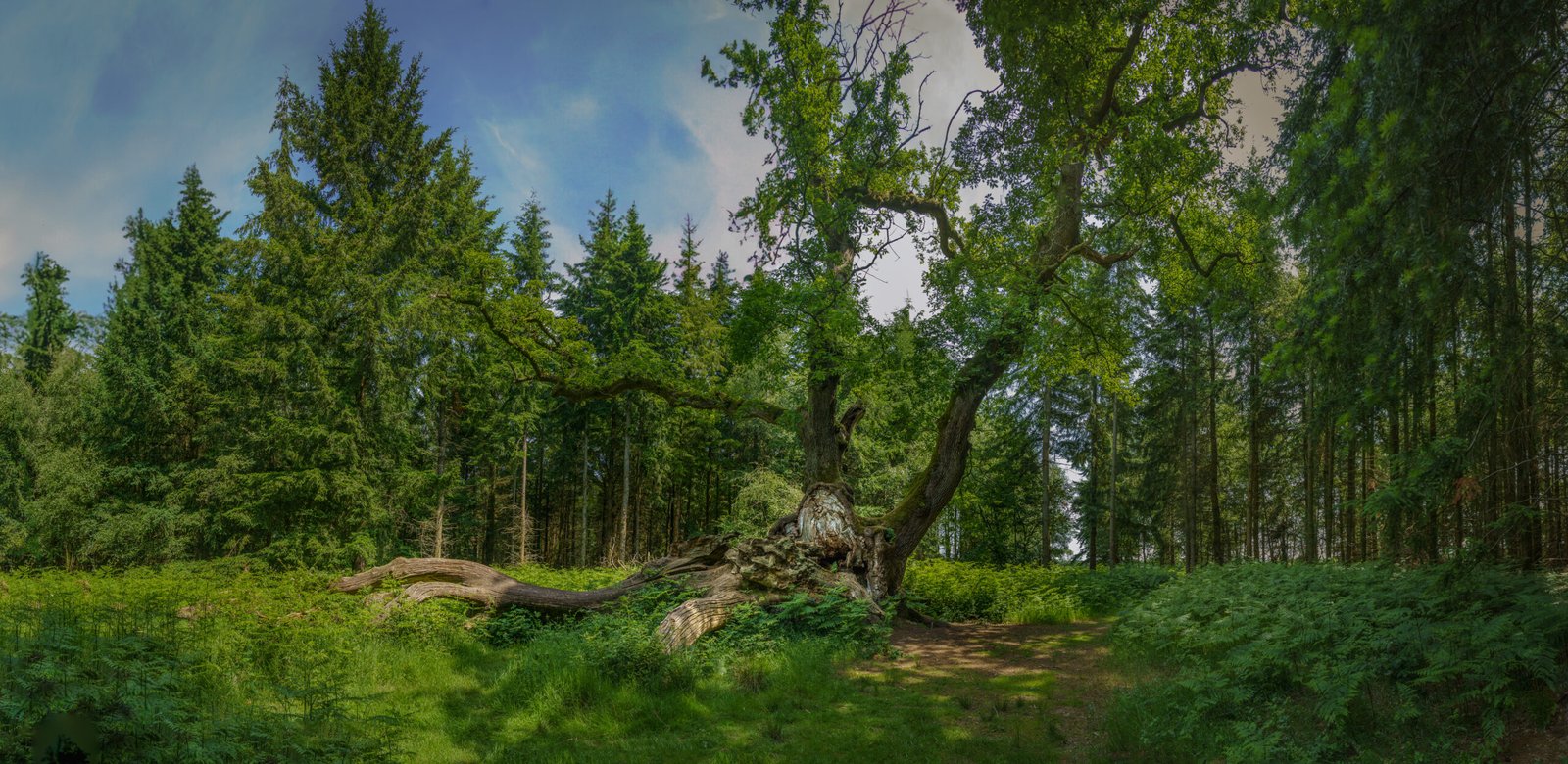
Radiohead’s 2011 album The King of Limbs was named after this ancient, sprawling sessile oak. The tree stands in Savernake Forest in Wiltshire, near Tottenham House—a listed country house where Radiohead recorded part of their 2007 album In Rainbows.1 The King of Limbs features lyrics and artwork that explore themes of mutation and wildness, rooted in lead singer-songwriter Thom Yorke’s concern for the environment.2
Believed to be over 1,000 years old, the tree also influenced artist Stanley Donwood, a longtime Radiohead collaborator who created the album cover and other related works.
With a wide, hollowing trunk and octopus-like limbs that stretch and twist in all directions, its unusual shape is the result of centuries of pollarding—a traditional method of cutting back branches to encourage regrowth—until the 19th century.
3. The Wilfred Owen Sycamore, Edinburgh
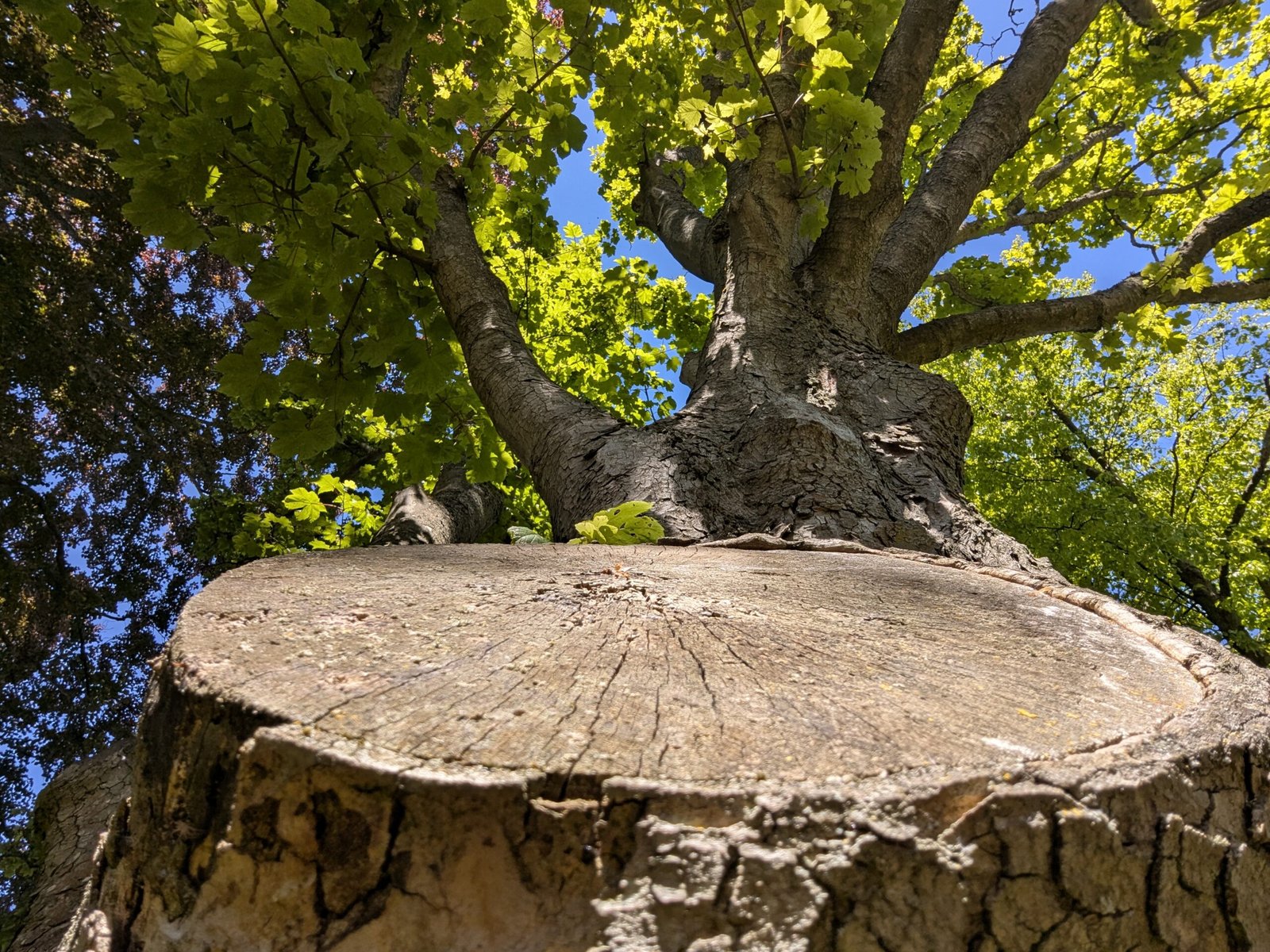
This sycamore, believed to be over a hundred years old, might go unnoticed by students as they walk past it on their way into Edinburgh Napier University. Yet it has been witness to a hidden history. Part of the university site was once home to Craiglockhart War Hospital, a military psychiatric facility. The tree was already standing when the young poet Wilfred Owen arrived on 26 June 1917 to be treated for shell shock sustained on the Western Front. Owen had endured traumatic experiences—including being trapped in a damaged hut with the body of a dead soldier for around two days while under heavy shelling.3
Owen’s psychiatrist at Craiglockhart, Captain Brock, encouraged his patients to stay active and engage in some form of productive work. He believed this approach helped them confront and overcome their problems, and heal—and he urged Owen to write.4 5 In August 1917, Owen met his literary mentor, Siegfried Sassoon, who was also being treated at the hospital. Before this meeting, the largely unpublished Owen had been inspired by the romantic style of John Keats and Percy Bysshe Shelley. He deeply admired Sassoon, already a well-known poet. Sassoon had a profound influence on Owen’s work, encouraging him to write more directly and realistically, and even editing some of his poems.6 The two may have sat beneath the sycamore during their conversations and rehabilitation.
Owen was discharged from Craiglockhart on 3 November 1917. He would go on to be remembered as a defining poetic voice of the First World War. Almost all the poetry for which he is remembered was written between August 1917 and September 1918.7 The first draft of Dulce Et Decorum Est, perhaps his best-known work, was penned while at the hospital. The full Latin phrase from which the title is drawn – Dulce et decorum est pro patria mori – translates as “It is sweet and fitting to die for one’s country.” Describing the death of a soldier following a gas attack, the anti-war poem powerfully critiques this sentiment. His use of the phrase is deeply ironic; the final line refers to it as “the old Lie.”8
Owen returned to France in August 1918. He was killed in action on 4 November 1918, just one week before the war ended. He was 25 years old.
In 2014, a large branch was removed from the Wilfred Owen sycamore for safety reasons. Commemorating 100 years since the start of World War I and honouring Owen’s memory, local instrument maker Steve Burnett crafted a violin from the wood. The instrument has been inscribed inside with Owen’s pre-war poem titled ‘Written in a Wood, September 1910‘.
4. The Tree of Peace and Unity, Dunadry Hotel, Antrim
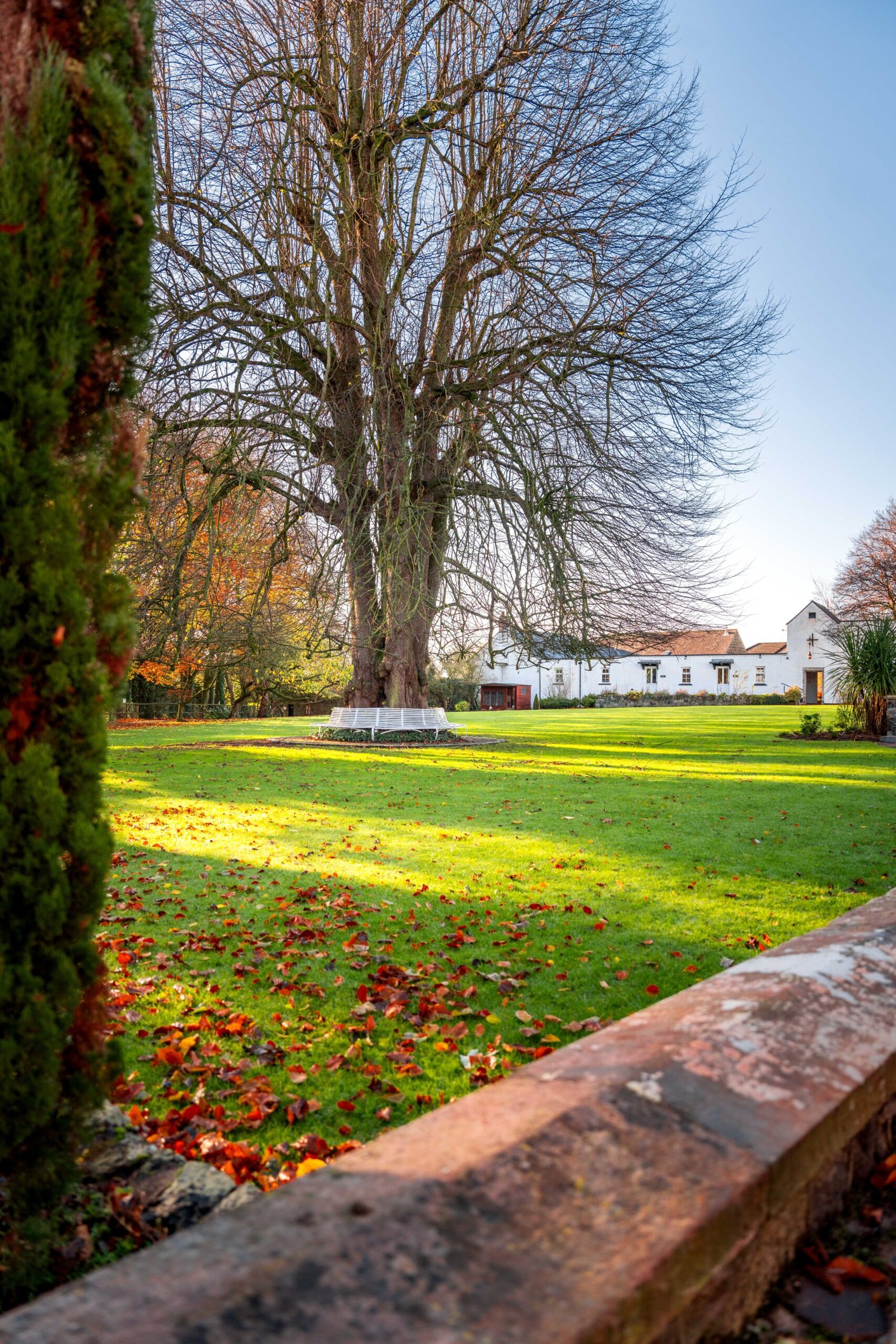
This majestic lime consists of two trees that grew together into a single and now inseparable trunk. The tree became a symbol of peace and reconciliation when then Prime Minister Tony Blair was photographed beneath it with David Trimble and John Hume after the signing of the Good Friday Agreement in May 1998, which helped bring an end to nearly three decades of conflict known as the Troubles.9
It is customary for newlyweds to sit beneath the tree, seeking its blessing of peace and happiness.
5. The Lollipop Tree, Salisbury Plain, Wiltshire
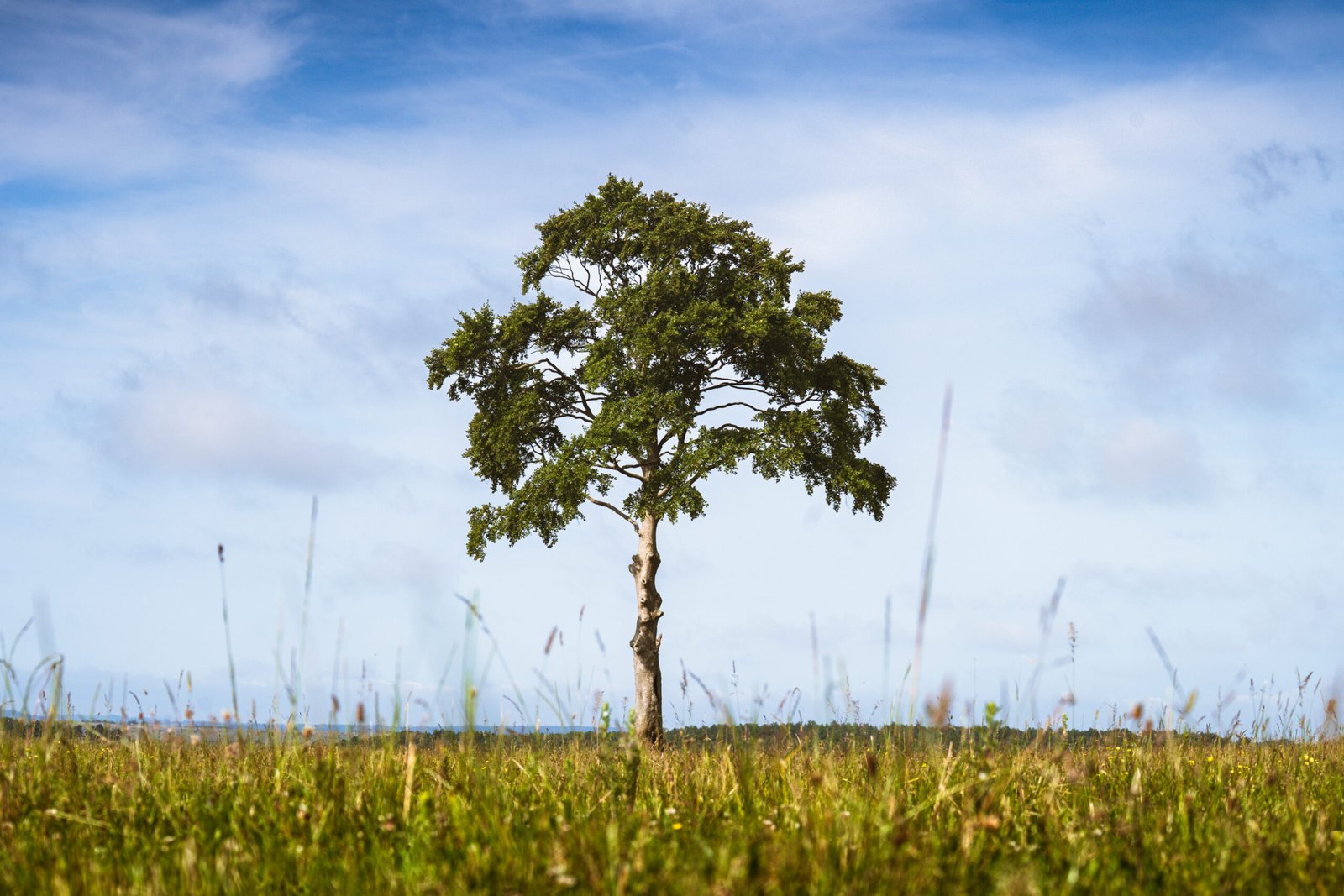
Named for its shape—with a tall, slender trunk and rounded canopy—this lone beech on a grassy plain has long been a favourite of photographers.
It played a starring role in the final scenes of 1917, Sam Mendes’ film about the First World War. Flourishing trees serve as symbols of life, peace, and hope throughout the movie.
6. The Beatles’ cedar, Chiswick House and Gardens
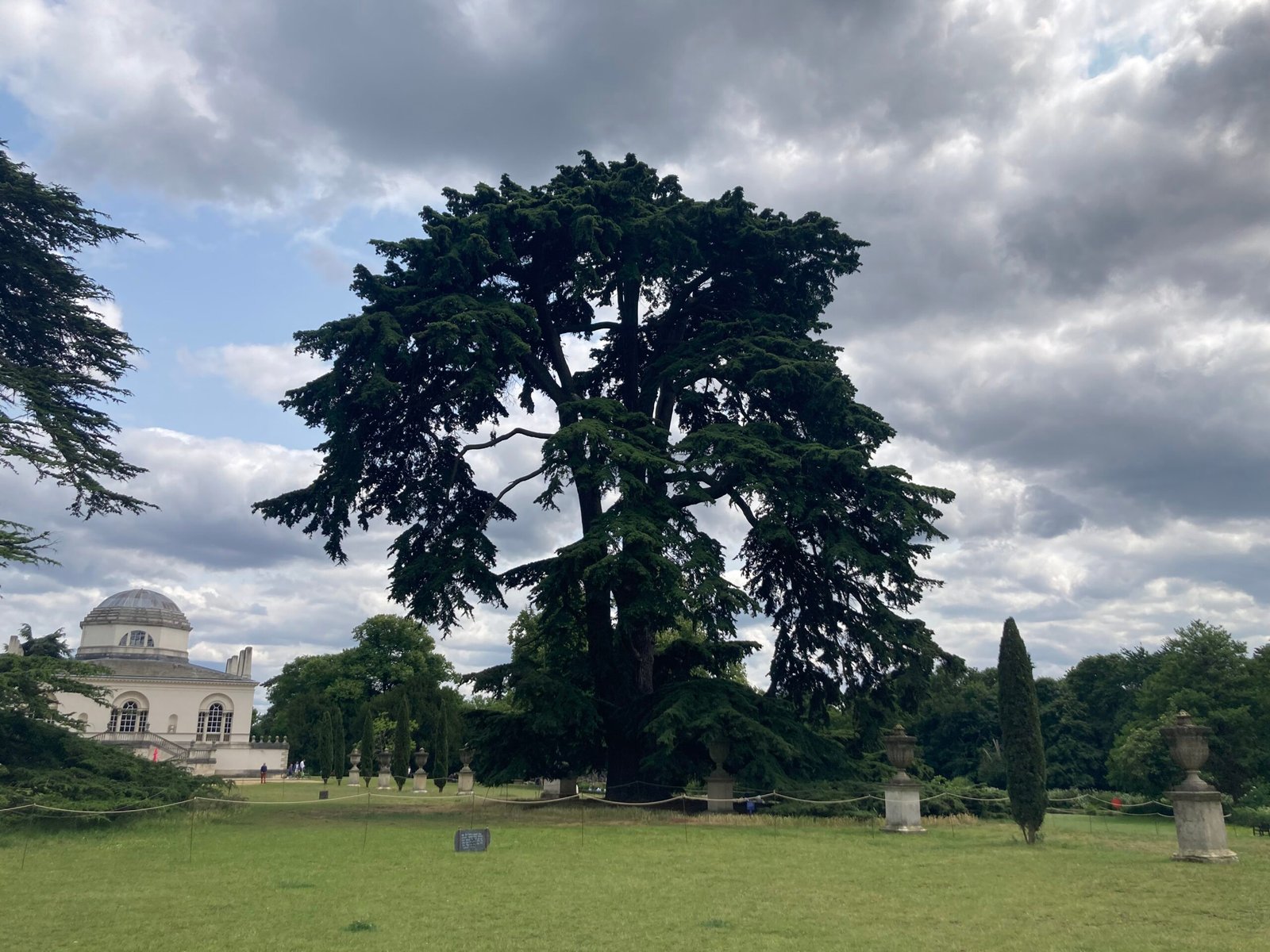
One of several colossal cedars of Lebanon in the grounds of Chiswick House and Gardens dating from the 1720s, this botanical bigwig has attracted a number of admirers—including Queen Victoria, Tsar Nicholas I of Russia, and the Shah of Persia.
Today, its cultural credentials include a starring role in the music video for the Beatles’ 1966 song Rain, which shows the Fab Four beneath its canopy and perched on one of its lower boughs. Filmed in colour, the video—along with that of its A-side single, Paperback Writer—helped lay the groundwork for what would become the modern music video, reshaping how music was shared. A still from “Rain” was also used as the cover image for the Beatles’ EP Nowhere Man.
7. Knole Park Oak, Kent
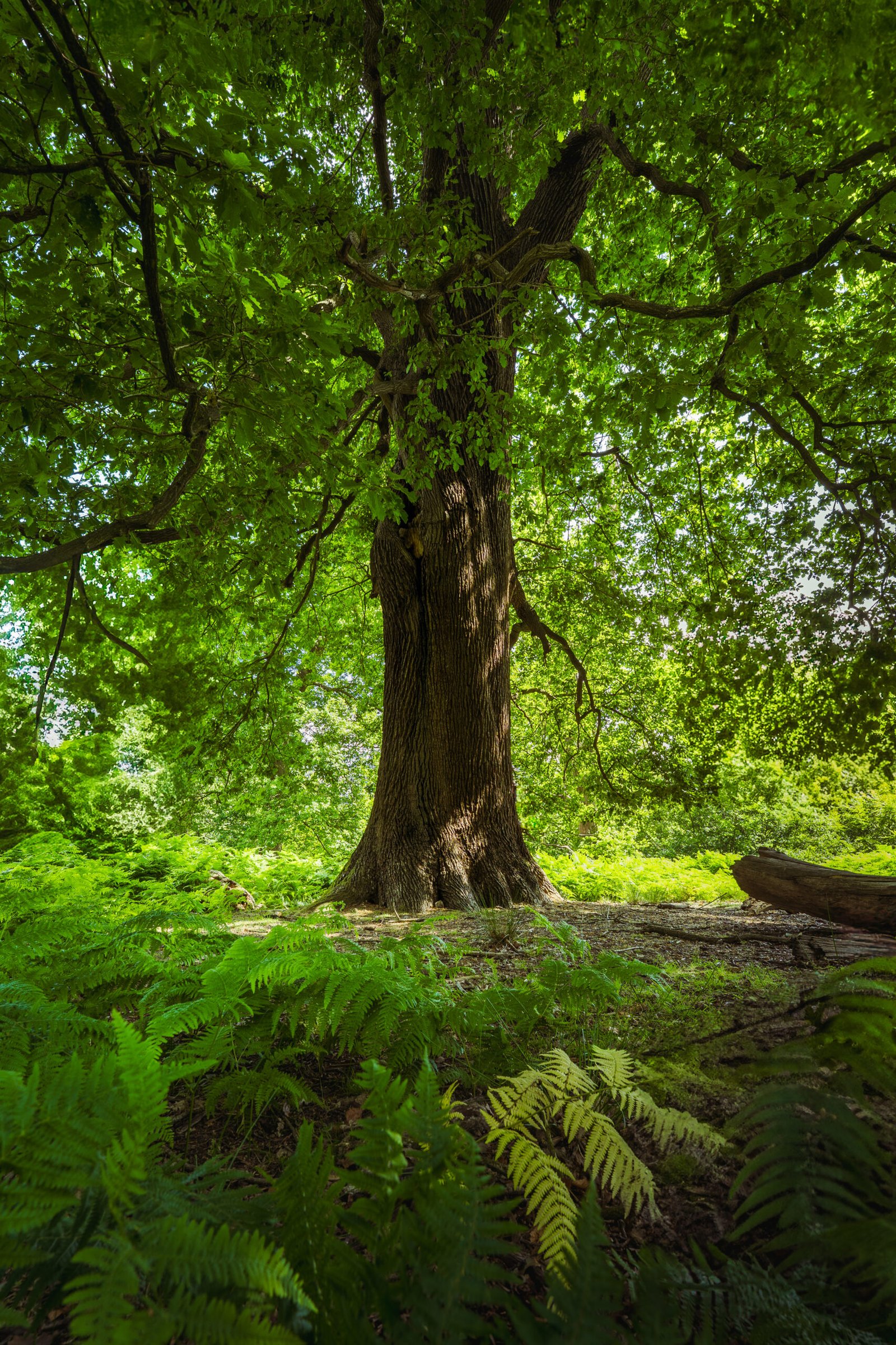
At just over 40 meters high and slender by oak tree standards, this sessile oak stands sentinel over its neighbours. It is believed to be the tallest of its species in Britain.
Considering its location and appearance, it is thought to be the very tree referred to in Virginia Woolf’s novel Orlando. One of Woolf’s most influential works, the book was inspired by Knole Park and her relationship with Vita Sackville-West, who called it home.
Early in the novel, Orlando walks ‘very quickly uphill through ferns and hawthorn bushes, startling deer and wild birds, to a place crowned by a single oak tree…so high indeed that nineteen English counties could be seen beneath; and on clear days thirty or perhaps forty!’ Orlando is inspired to write a poem called The Oak Tree, which recurs throughout the novel. Nature is a steady source of comfort and creative energy for Orlando, who ultimately returns to the tree to bury the poem in a symbolic gesture.
8. Bradgate Park’s oldest oak, Leicester
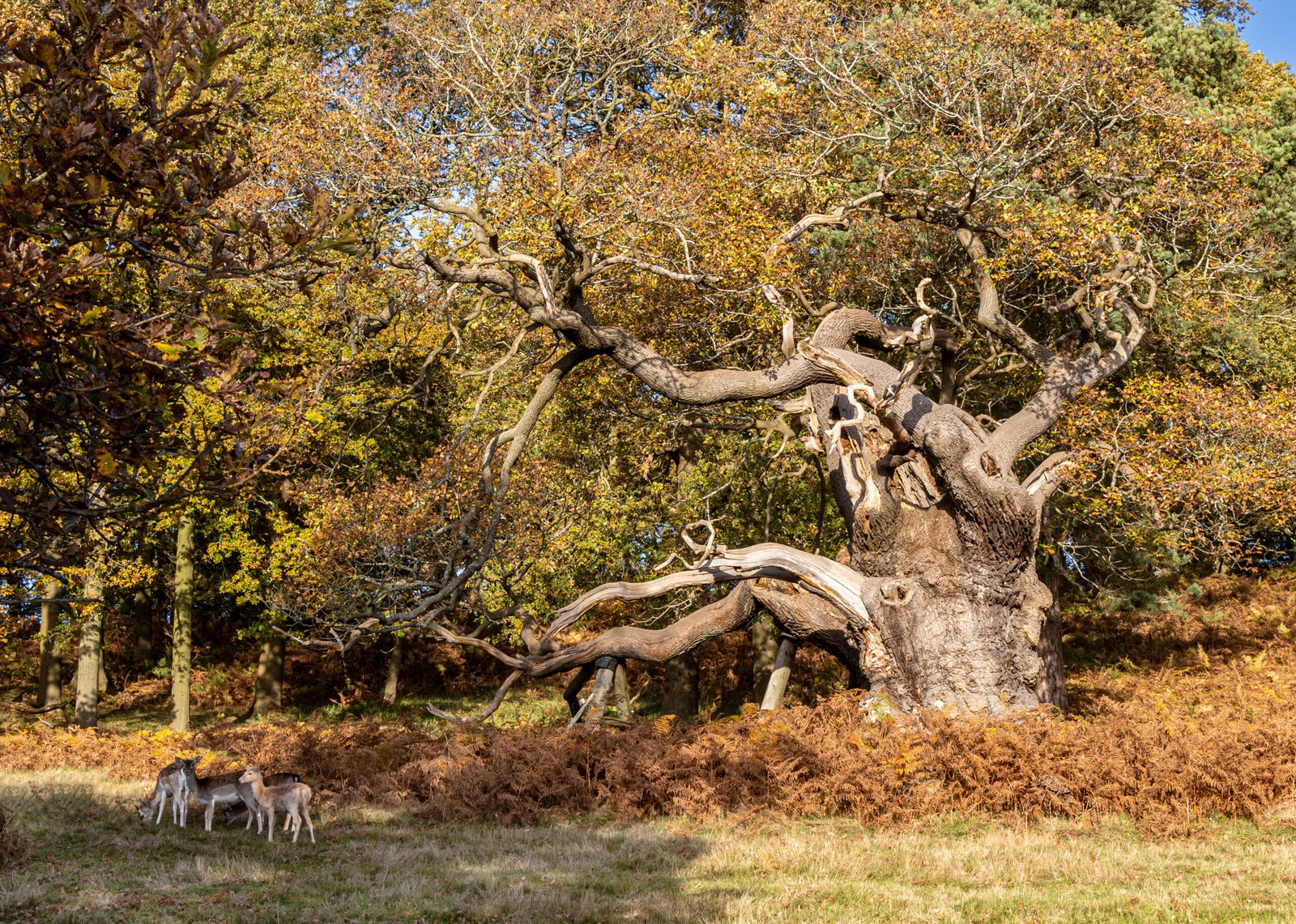
The huge, knobbly trunk of this arboreal elder – believed to be over 820 years old – has split into two, with its twisted branches supported to remain upright. The oak would already have been a commanding presence in the grounds of Bradgate House when Lady Jane Grey—England’s ill-fated ‘Nine Days Queen’—was born there in 1537. Standing less than 50 metres from the Tudor mansion, she may even have played beneath its boughs as a child.
Britain’s shortest reigning monarch, Lady Jane Grey ascended to the throne in July 1553 at the age of 16, only to be deposed by Mary I and executed in February the following year. According to legend, the oaks of Bradgate Park were pollarded in mourning, with their upper branches removed. This tree bears clear signs of having been cut back—could the legend be true?
9. The Lonely Tree, Llyn Padarn, Wales
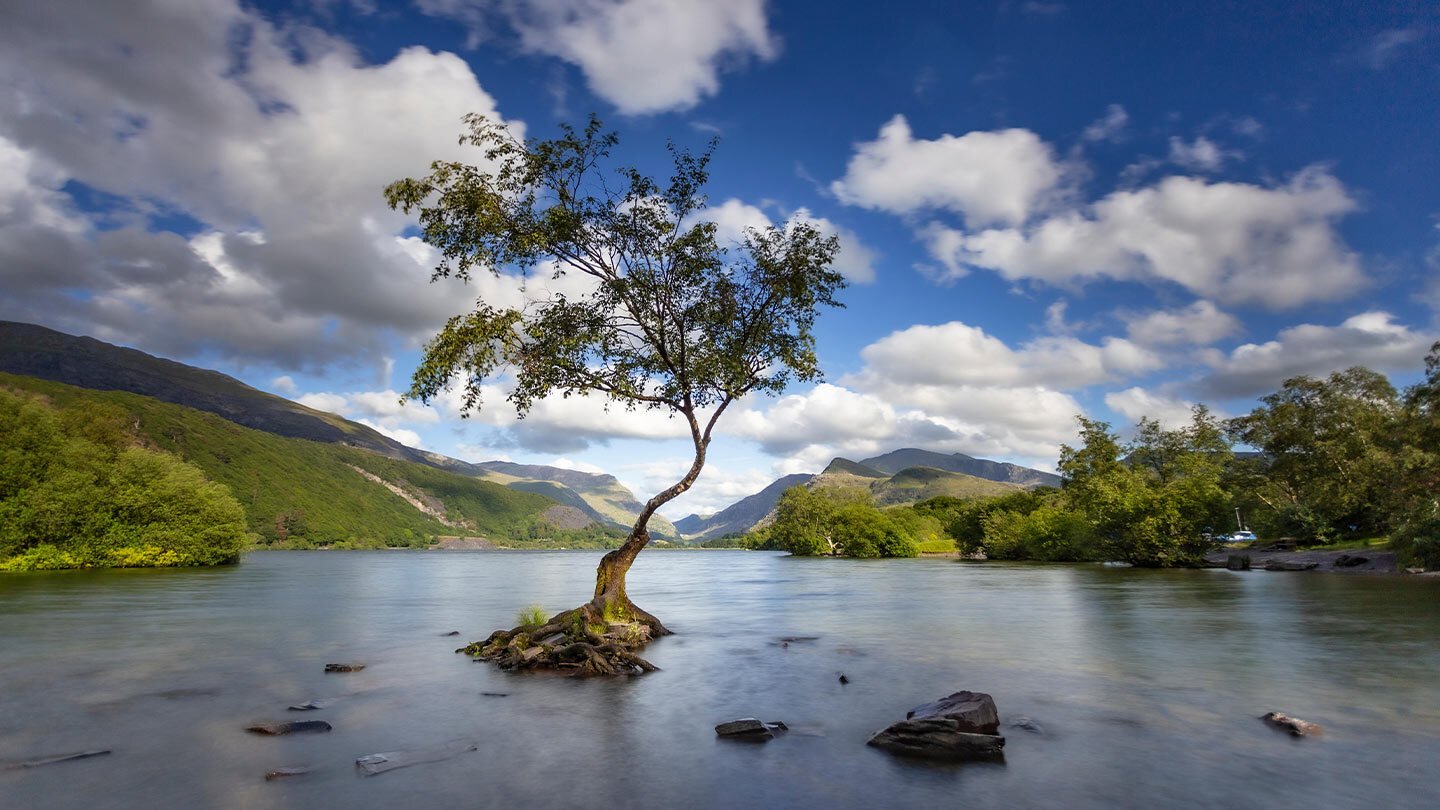
Standing in solitude near the edge of a mirror-like lake, with Eryri’s majestic mountains in the background, this birch has become a much-loved local landmark. A relative youngster at around 30 years old, its twisted form has been shaped by the weather – a quiet testament to resilience. The landscape around it is in constant flux. Shifting lake levels alternately expose its roots at the shoreline or leave it marooned on its own tiny island as the waters rise.
In certain light, the reflections on the water’s surface are striking, and it has become a magnet for photographers. It featured in a 2021 Chromebook advertisement and even boasts its own Facebook appreciation group.
In September 2024, access to the area was restricted when part of the lake was cordoned off to film battle scenes for season four of The Witcher, starring Liam Hemsworth. With the release expected later in 2025, keep an eye out to see if the Lonely Tree makes the cut.
10. The Argyle Street ash, Glasgow
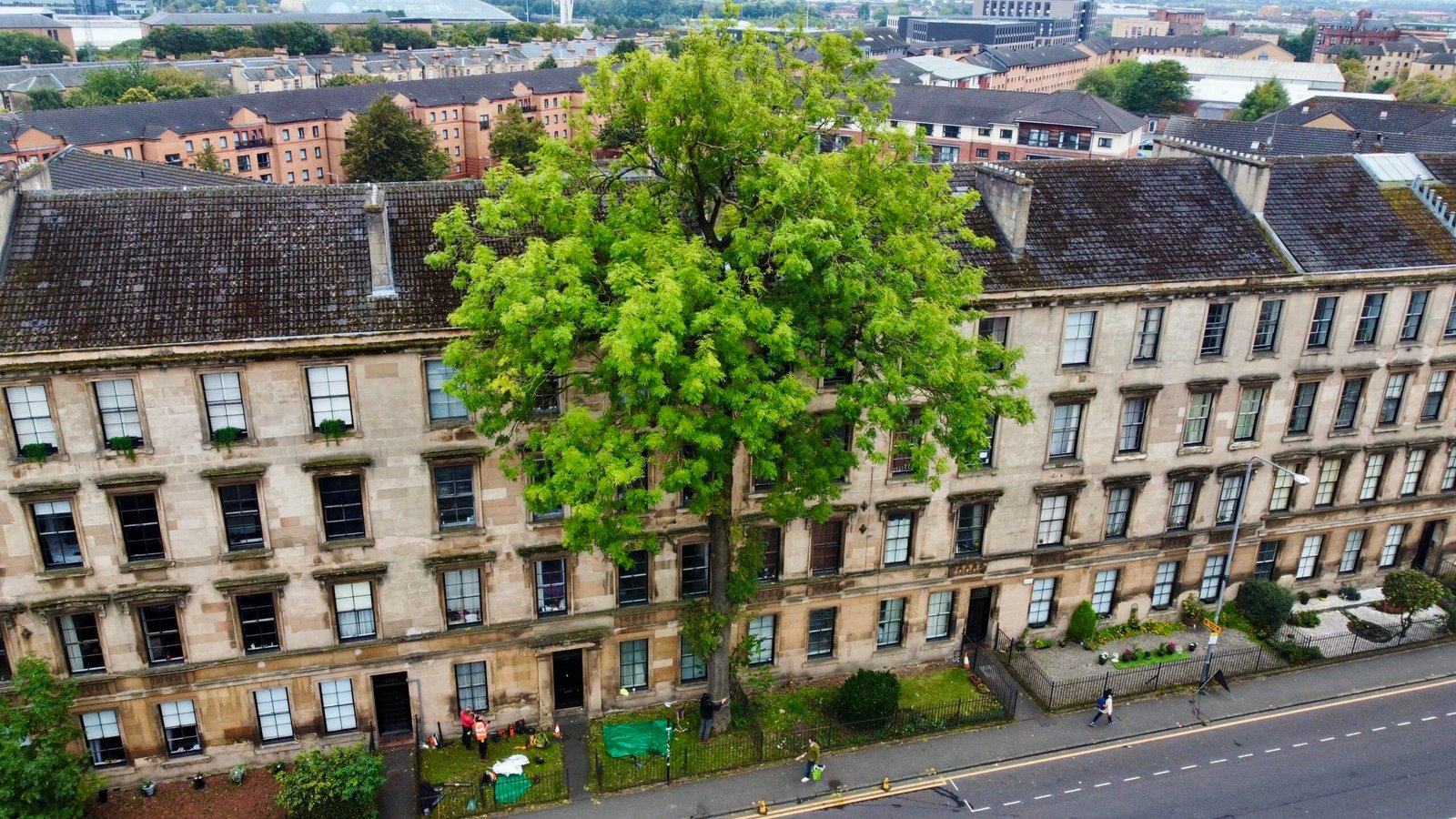
Selected from the public wildcard nominations, this 170-year-old ash with panache holds its ground on one of Glasgow’s busiest roads. Known locally as The Lone Tree of Finnieston or The Only Tree on Argyle Street, it’s no stately specimen tucked away in a grand estate. It’s a tenement tree. A tree of the people. One that lives in Glaswegians’ hearts and is woven into the emotional fabric of the city, according to David Treanor, who nominated it.
It has witnessed the rise and fall of industry and weathered the Clydeside Blitz. It was the first tree in Glasgow to receive official protection under a Tree Preservation Order, and has survived recent redevelopment. Now, it’s defying the odds once more – resisting ash dieback with quiet resilience.
Among its recent admirers are Belle and Sebastian’s Stuart Murdoch, who said, “It must have good genes to have made it. It’s hip now because it’s in Finnieston, but I say it was always cool.”
Inspiring cultural trees shortlisted for Tree of the Year 2025 – Woodland Trust
Tree of the Year – Woodland Trust
- Radiohead unveil first ‘The King Of Limbs’ band photo ↩︎
- The King of Limbs explained ↩︎
- https://warfarehistorynetwork.com/article/the-writings-of-wilfred-owen/ ↩︎
- https://www.bbc.co.uk/news/uk-scotland-edinburgh-east-fife-67281178 ↩︎
- https://livesofthefirstworldwar.iwm.org.uk/story/27180 ↩︎
- https://slate.com/human-interest/2014/11/siegfried-sassoon-and-wilfred-owen-the-best-poems-of-the-great-war-are-by-two-gay-men.html ↩︎
- https://www.wilfredowen.org.uk/wilfred-owen/biography ↩︎
- https://interestingliterature.com/2018/03/a-short-analysis-of-wilfred-owens-dulce-et-decorum-est ↩︎
- History-Booklet-2022.pdf ↩︎
